拉萨旅行有限公司
随着经济的快速发展,人们的经济生活水平明显提高,人们在满足物质需求的同时也在追求这精神上的享受,于是,旅游成为了人们心目中最理想的目标。旅行我们在游玩中收获喜悦,还能丰富
随着经济的快速发展,人们的经济生活水平明显提高,人们在满足物质需求的同时也在追求这精神上的享受,于是,旅游成为了人们心目中最理想的目标。
旅行我们在游玩中收获喜悦,还能丰富见识等等,但是得有非常好的精神面貌,精气神不止自己舒服,还给他人留下美好的印象,精气神来源旅途的安排和休息环境,而青海丽途国际旅行社股份有限公司,待客如宾,诚挚服务,热烈欢迎大家参观,考察,咨询
便利交通
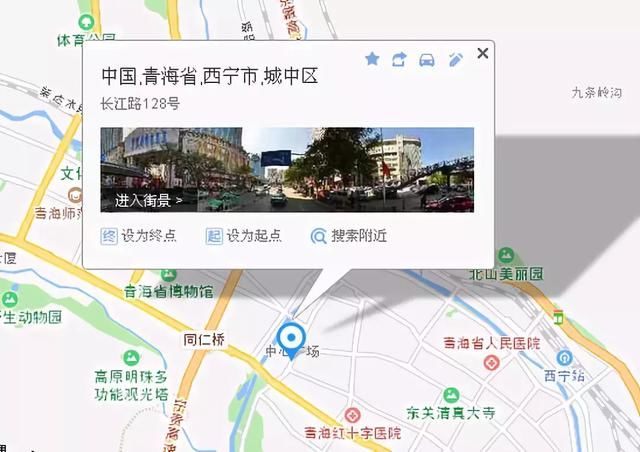
欢迎各界人士来电咨询
财富热线:沈总 18797175358
部分展示
高原蓝宝石——青海湖一日游
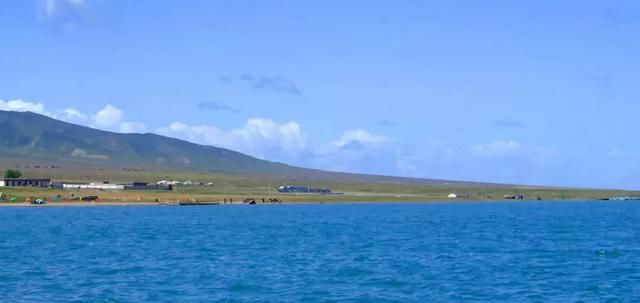
早晨07:30左右开始市区沿途接人;导游根据客人入住酒店就近安排集合点集合;乘车前往青海湖北岸著名的【金银滩大草原】;金银滩因受青海湖的滋润、祁连山冰雪山川的抚育而肥沃,并拥有着金银般的身价,金银滩以其宽广的胸怀成功托起了中国强国之梦,中国第一个核武器研制基地在这里诞生。这里是一片碧草如茵的大草原。浮云般的羊群,棕黑相间的牦牛,星星点点地徜徉在青草和野花丛中。远处,山峦起伏,偶有雄鹰飞过的身影,莲花般的蒙古包散落在白云深处。金银滩草原牧草肥美、牛羊肥壮,人们以金银遍地来形容这片美丽而富饶的土地,故得名“金银滩”。因西部歌王王洛宾的一首《在那遥远的地方》而名扬海内外;同时也是中国第一个核武器研制基地——原子城的原址所在地。
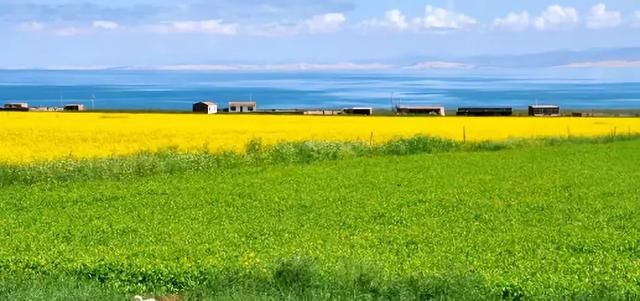
观赏【环湖西路】沿途美景,环湖西路位于青海湖西侧,一般是指黑马河乡到石乃亥一段的公路,这段公路离湖面最近,周围草场、小山等风光绝美,因此也是骑行者们最爱的路段。除了距离湖面近以外,【环湖西路】也是观看青海湖日出最佳的地带,在公路12-14公里处有几家客栈,都有视野极好的湖景房,清晨时推开窗户,看到一轮红日从蓝色湖面中升起,景色蔚然壮观。后乘车前往被中国国家地理杂志评为中国最美湖泊的【青海湖二郎剑景区】;抵达青海湖二郎剑。
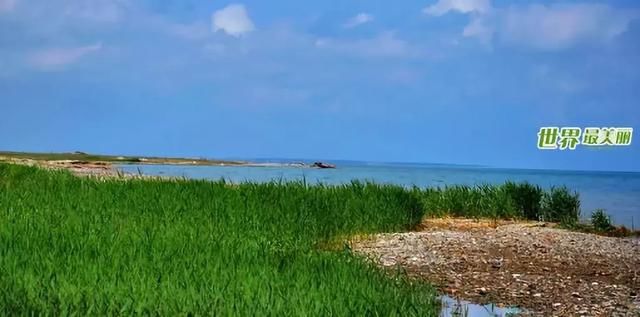
青海湖,藏语名为“措温布”(意为“青色的海”)。湖泊地域面积辽阔,环湖一圈约360公里,湖水浩瀚无边又蔚蓝空灵。湖的周围被群山环抱,而贴近湖畔则是苍茫的草原,景色壮观优美,【倒淌河】发源于日月山西麓的察汗草原,西止青海湖,藏族同胞说这是文成公主的眼泪淌成的。当年文成公主嫁到吐蕃路过此处时思念家乡,扔了日月宝镜而成日月山,伤心痛哭的眼泪便汇成了这向西行的河流。倒淌河是青海湖水系中最小的一支。河流蜿蜒曲折,河水清澈见底,看上去犹如一条明亮的缎带飘落在草原上那样神奇迷人乘车返回西宁;(车程约1.5小时)可供观赏的地带和景观很多后乘车前往【日月山景区】;
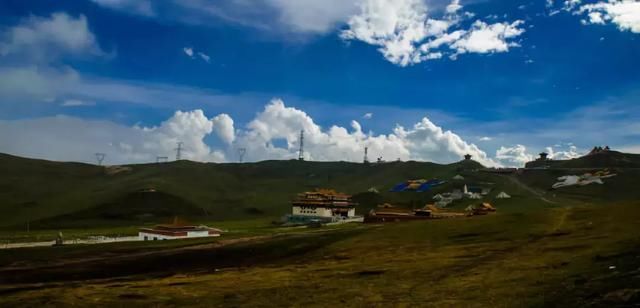
也是青海进藏的必经之路。传说文成公主进藏时,在此摔碎了无法照见家乡的石镜,分为日、月两瓣,日月山因此而得名。日月山山口两侧各有一座小峰,分别修有日亭、月亭两座标志性建筑。游客一般是从西宁前往青海湖时路过日月山,此处草场丰茂,山峦绵延,山间还有很多经幡随风飘扬,风光很美日月山山脚下有一条特殊的河,结束愉快行程。
稻城亚丁——九日
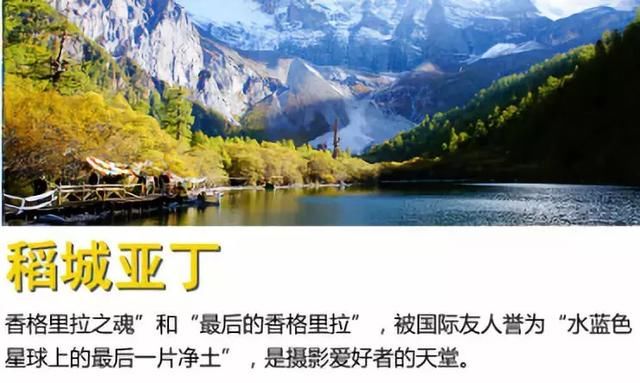

第一天:兰州158KM黄南107KM夏河(拉卜楞寺)(宿)

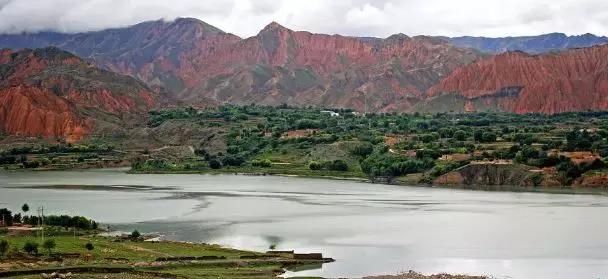
乘车途径临夏之后前往夏河拉卜楞寺。藏语全称为:"噶丹夏珠达尔吉扎西益苏奇具琅",意思为具喜讲修兴吉祥右旋寺。简称扎西奇寺,一般称为拉卜楞寺。拉卜楞寺是藏语"拉章"的变音,意思为活佛大师的府邸。是藏传佛教格鲁派六大寺院之一,被世界誉为"世界藏学晚上住夏河。
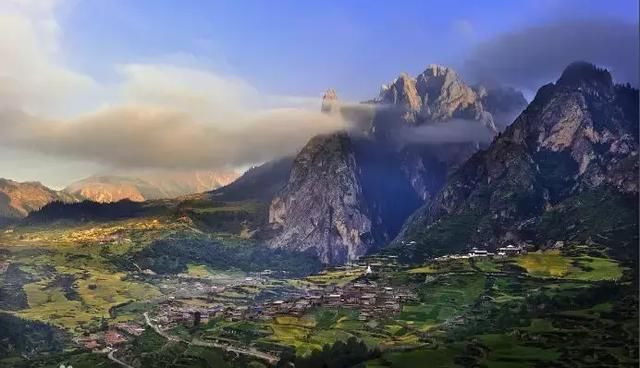
第二天:夏河64KM合作36KM碌曲48KM尕海乡32KM郎木寺27KM花湖59KM若尔盖64KM唐克 (迭部宿,扎尕那)

早餐后乘车前往合作途径碌曲,尕海前往郎木寺,郎木寺,是甘南藏族自治州碌曲县下辖的一个小镇。一条小溪从镇中流过,小溪虽然宽不足2米,却有一个很气派的名字“白龙江”,如按藏文意译作“白水河”。小溪的北岸是郎木寺,南岸属于四川若尔盖县,属于甘肃的“安多达仓郎木寺”和属于四川的“格尔底寺”就在这里隔“江”相望。
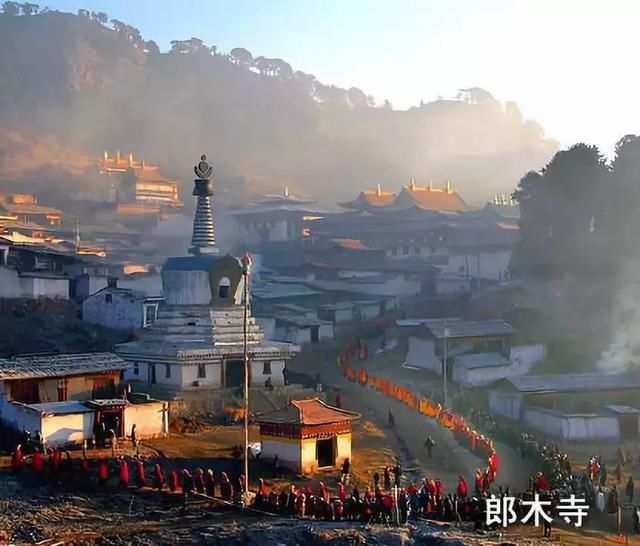
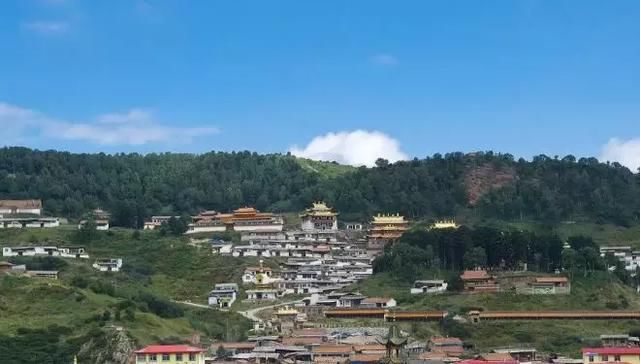
一条小溪分界又联结了两个省份,融合了藏、回两个和平共处的民族;喇嘛寺院、清真寺各据一方地存在着;晒大佛,做礼拜,小溪两边的人们各自用不同的方式传达着对信仰的执著。之后经过热尔大坝草原上的一个天然海子。热尔大坝是我国仅次于呼伦贝尔大草原的第二大草原,海拔3468米。花湖经典的时间是在五六月份,湖畔五彩缤纷,好像云霞委地,而湖中则开满了水妖一样的绚丽花朵,这种植物看起来平淡无奇,在雨水充沛的八月把纯蓝的湖水染成淡淡的藕色,时深时浅,像少女思春时低头的一抹酡红。晚上住迭部
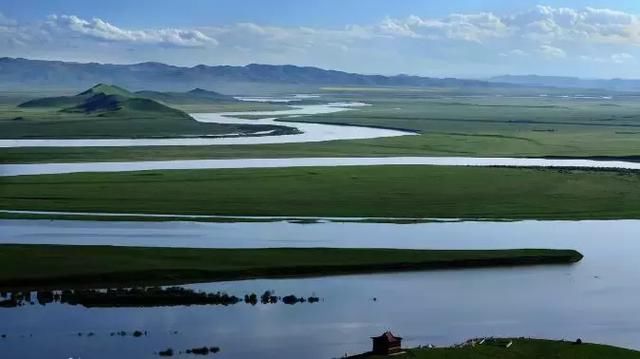
第三天唐克(黄河九曲第一湾)37KM瓦切44KM红原35KM安曲45KM壤口47KM刷马路口45KM马尔康
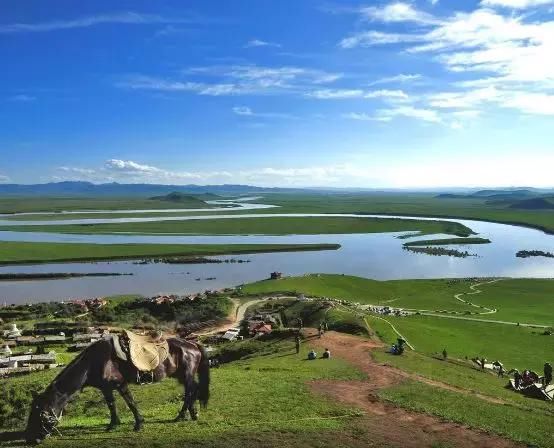
早餐后前往黄河第一弯地势平坦,水流舒缓,小岛、岸边红柳成林。索克藏寺院修筑于黄河第一弯山凹临河处,白塔古寺,帐篷炊烟相伴黄河,更显自然悠远博大,这里有四川省最大的草原,面积近3万平方公里,由草甸草原和沼泽组成。

第一湾位于若尔盖县唐克乡,距县城61公里。地处草原腹心地带,白河于此汇入黄河,形成浩大气势,草原地势平坦,一望无际,人烟稀少。游览结束前往马尔康方向途径红原的最大的乡瓦切乡走来途径刷马路口晚上住马尔康

第四天:马尔康39KM白湾33KM观音桥83KM黑桥41KM壤塘90KM年龙60KM色达(宿)

早餐后游览马尔康土司官寨,官寨依山而建,坐北朝南,被国际友人赞誉为“东方建筑史上的一颗明珠”。官寨始建于1918年清朝乾隆年间,为四层碉房,1936年毁于大火,1938年----1940年,土司索观赢组织人力进行重建。1935年7月,毛泽东同志及中央机关长征途中曾在官寨住宿一周。1988年,卓克基官寨被国务院列为第三批国家重点文物保护单位。卓克基土司官寨有着重要的历史文化以及丰富的旅游资源。
之后前往观音庙位于观音镇境内,距县城约85公里,有拉萨第二之称,是阿坝州重点开放寺庙,该寺庙始建于公元七世纪,共传承25代。白若杂纳曾加持观音菩萨和圣山,并为寺庙取名“勒琼德钦朗”。
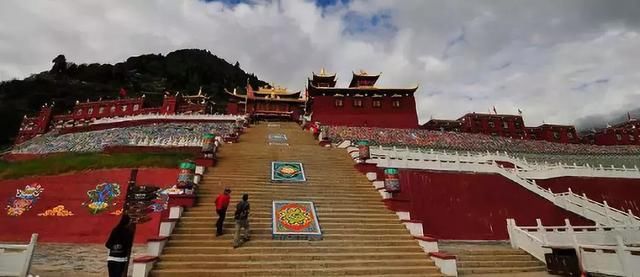
绰斯甲观音菩萨名声远扬四海,朝拜者甚众。众多高僧大德朝拜过土基钦波。贡唐活佛和当祥则堪布为观音菩萨取过甘露水。1982年班禅大师曾亲笔写信关心观音庙。观音庙供奉众多神像佛像,收藏有大藏经、唐卡、法器等众多文物,观音庙以灵著称于世,是众多信徒心中的圣地。游览结束前往色达,安排酒店入住休息。
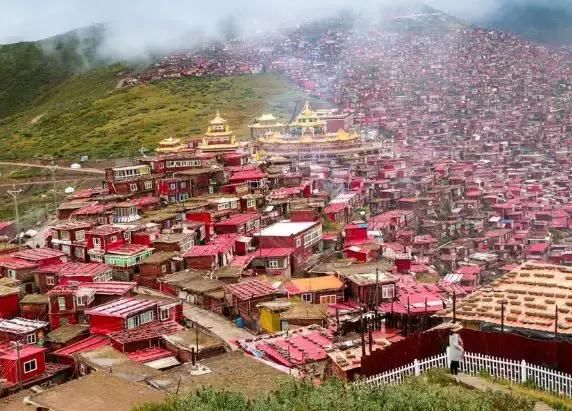
第五天:色达20KM五明佛学院(途径天葬台)62KM翁达72KM炉霍94KM甘孜
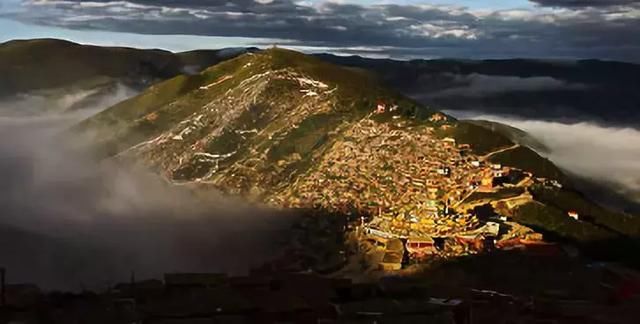
早餐后前往色达喇荣五明佛学院是由晋美彭措法王1980年创办,在短短数年间从藏区一个山谷深处迅速崛起,一跃成为世界上最大的藏传佛学院。三万多出家僧众在此修行居住。佛学院戒律十分严格,男众女众的僧舍泾渭分明,之后途径翁达藏寨地处四川省甘孜藏族自治州的色达县,距离成都有近八百公里的路程,平均海拔在四千米左右。历史上这里是茶马古道的途经之地,也许是因为气候的原因,曾有人将这里称为高原牧区的小江南。
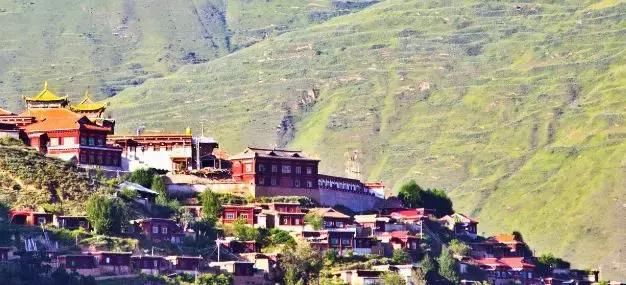
途径炉霍,炉霍历为去藏抵青之要衢和茶马古道之重镇。之后前往甘孜安排酒店入住休息。
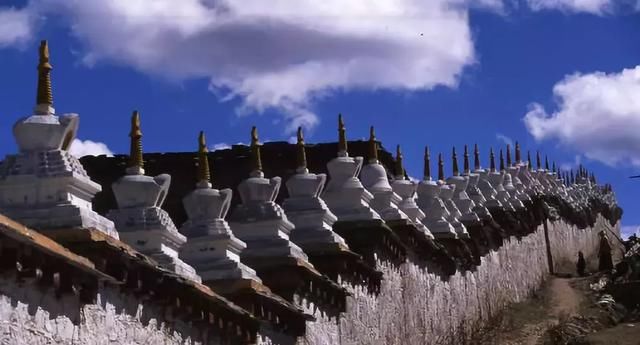
第六天:甘孜107KM新龙158KM理塘160KM稻城(宿)
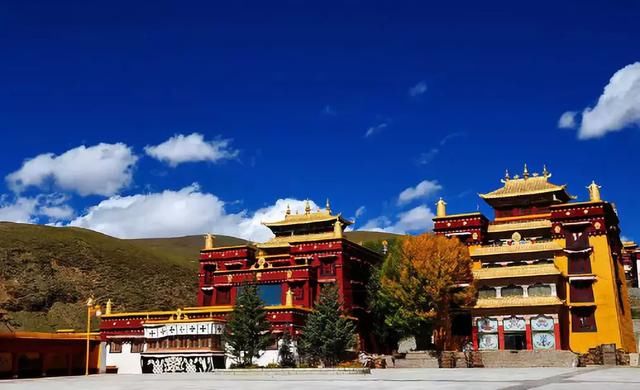
早餐后从甘孜前往理塘,塘寺又名长青春科尔寺,位于县城城北山坡。原为黑教寺庙,明朝万历年间三世达赖途经该地时改为黄教并为其开光。闻名康区的格鲁派寺庙理塘寺在县城城北约1公里的中莫拉卡山的山坡上。寺内珍藏有各种类型的释迦牟尼镀金铜像,佛教经典、三世达赖用过的马鞍、明清时代的壁画等珍贵文物,该寺每年藏历正月十五有酥油塑花会。晚上前往稻城安排酒店入住休息。

第七天:稻城75KM香格里拉镇34KM亚丁110KM稻城(宿)

早餐后前往稻城亚丁,位于四川省甘孜藏族自治州稻城县香格里拉镇亚丁村境内,主要由“仙乃日、央迈勇、夏诺多吉”三座神山和周围的河流、湖泊和高山草甸组成,它的景致保持着在地球上近绝迹的纯粹,因其独特的地貌和原生态的自然风光,被誉为“香格里拉之魂”和“最后的香格里拉”,被国际友人誉为“水蓝色星球上的最后一片净土”,是摄影爱好者的天堂。
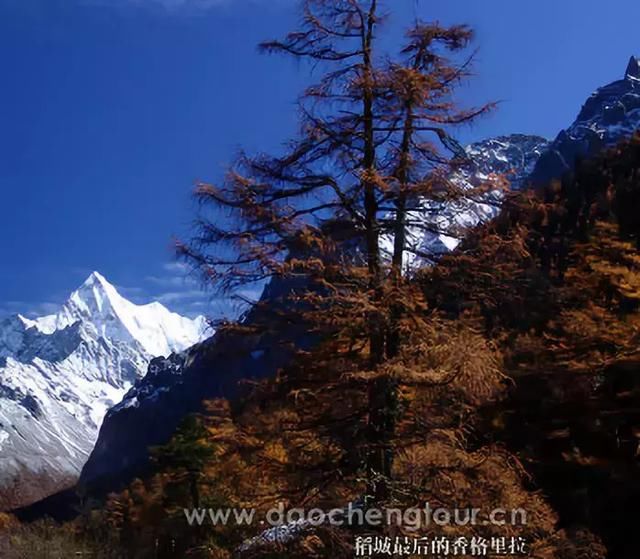
第八天:稻城160KM理塘134KM雅江60KM新都桥9KM瓦泽69KM康定(宿)
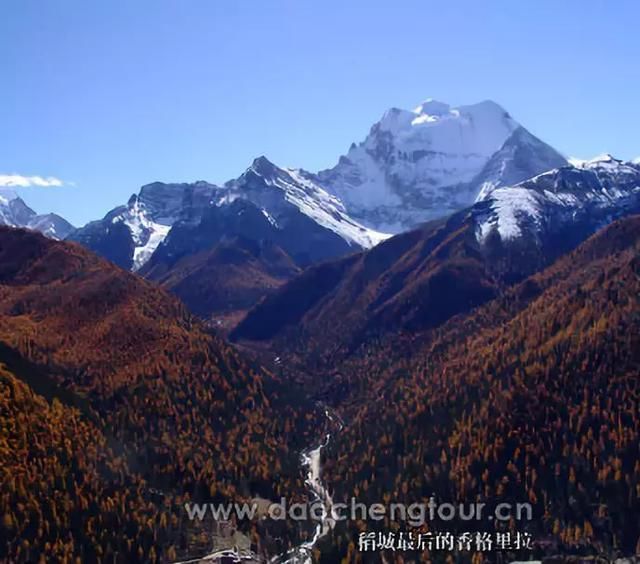
新都桥是令人神往的“摄影天堂”,地处在公路318国道南、北线分叉路口,是一片如诗如画的世外桃源。神奇的光线,无垠的草原,弯弯的小溪,金黄的柏杨,山峦连绵起伏,藏寨散落其间,牛羊安详地吃草……川西的平原风光美丽地绽放。这,就是新都桥,令人神往的“光与影的世界”、“摄影家的天堂”,之后康定,一座享誉世界的历史文化名城;一座 跑马山,名扬五洲四海;一曲《康定情歌》千古绝唱,醉了天下人

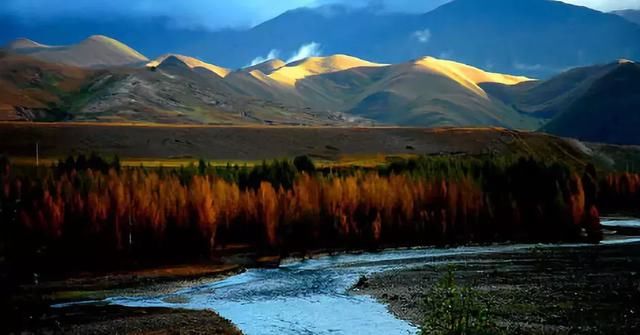
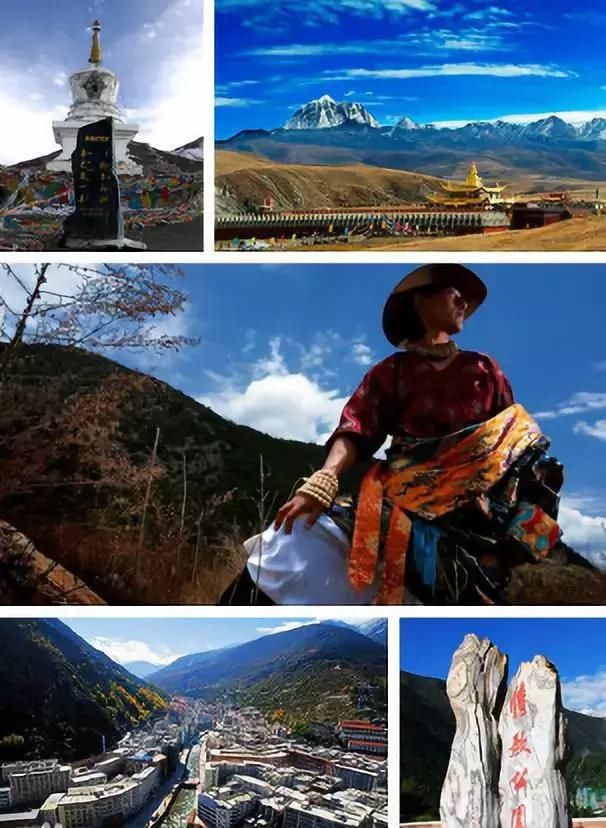
第九天:康定161KM雅安126KM成都
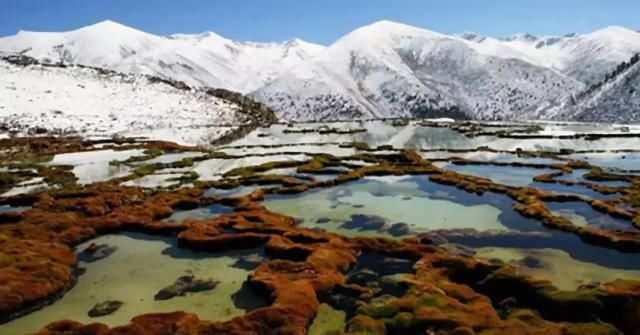
感谢您的鉴读
更多产品敬请期待!
Abstract:
With the rapid development of the economy, people's economic living standard has been improved obviously. People are also pursuing the spiritual enjoyment while meeting the material needs. Therefore, tourism has become the most ideal goal in the eyes of the people.
We have a good knowledge of pleasure during the trip, but I have to have a very good mental outlook. The spirit of the spirit is not only comfortable, but also a good impression to others, the arrangement and the rest of the journey of the spirit of God, and the Qinghai Li Road International Travel Service Limited by Share Ltd, guests like guests, sincere service, warmly welcome. Everybody visit, inspect, consult
Convenient transportation
Welcome people from all walks of life to call for consultation
Fortune hotline: Shen 18797175358
Part of the display
Plateaus sapphire -- one day tour of Qinghai Lake
At about 07:30 in the morning, the city began to take over the city along the road. The tour guide set up the collection point near the Check Inn Hotel, and went to the famous North Bank of the Qinghai Lake. The golden and silver beach was fertile with the nourishment of Qinghai Lake, the snow and snow mountain of Qilian Mountains and the gold and silver price, and the golden and silver beach was wide. The success of the broad heart has set up the dream of China's powerful nation. The first nuclear weapon research base in China was born here. This is a grassy grasslands. The flock of clouds, the brown and black yaks, roam in the grass and wild flowers. In the distance, the mountains were undulating, occasionally the eagle flying past, the lotus like Mongolia bag scattered in the deep white clouds. The golden Yintan grassland is rich in pasture and fat in cattle and sheep. People use gold and silver everywhere to describe this beautiful and rich land, hence the name "golden silver beach". Wang Luobin, a song king of the west, was famous at home and abroad, and it was also the site of the first nuclear weapon development base of China, the site of the atomic city.
Viewing the beauty of the West Road around the lake, the west side of the lake is located on the west side of the Qinghai Lake. It usually refers to the road from the Hei Ma River to the Shi Naihai section. The road is very close to the lake, and the surrounding grass and hills are beautiful, so it is also the favorite section of the riders. In addition to the lake near the lake, it is also the best area to watch the sunrise on the Qinghai Lake. There are several Inn on the 12-14 kilometers of the road, all of which have an excellent view of the lake, opening the windows in the morning and seeing a red day rising from the blue lake. Later, he traveled to the Qinghai Lake Erlang sword area, which was named China's most beautiful lake by China's National Geographic magazine, and arrived at Erlang sword of Qinghai Lake. In Qinghai Lake, the Tibetan language is called "the weming cloth" (meaning "the blue sea"). The lake has a vast area, about 360 kilometers around the lake. The lake is vast and boundless and blue. The lake is surrounded by mountains, and near the lakeside is a vast grassland, the scenery is magnificent and beautiful. [pour River] originates from the Khan prairie of the Shanxi foot of the sun and the moon, and West Qinghai Lake, the Tibetan compatriots say this is the tears of Wencheng princess. When Princess Wencheng married to the Tubo, she missed his hometown and threw the sun moon mirror into the sun and moon mountains. Tears of grief and tears merged into the river to the West. The dripping river is the smallest of the Qinghai lake water system. The river is winding, the water is clear, and it looks like a bright satin ribbon falling on the prairie and returning to Xining.
It is also the only way for Qinghai to go to Tibet. It is said that when Princess Wencheng entered Tibet, she broke up the stone mirror which could not be seen in her hometown, divided into two petals of the sun and the moon. There is a small peak on both sides of the mountain pass. There are two landmark buildings, namely, Japanese pavilion and moon Pavilion. Tourists usually travel from Xining to the Qinghai Lake by the sun and moon mountains, where the pasture is luxuriant, the mountains are long, and many of the rivers are fluttering in the wind. The beautiful scenery is very beautiful at the foot of the sun and moon mountain, and there is a special river at the end of the mountain.
Aden, Daocheng - nine
First day: Lanzhou 158KM Huangnan 107KM Xiahe (LA bleng Temple) (Su)
After the car goes to Linxia, he goes to the La River in the Xiahe river. The Tibetan language is known as: "Dahl, the leader of the county, and the emperor of." In short, the zhacaci temple is generally called the La Bu Leng temple. The temple of La Pullen is a variation of the "La Zhang" in the Tibetan language, meaning the residence of the master of the living Buddha. It is one of the six monasteries of Tibetan Buddhism, known as the "world Tibetan School".
The second day: Xiahe 64KM cooperation 36KM Lu Qu 48KM GA Hai Township 32KM Lang Mu Si 27KM Hua Hu 59KM Ruoergai 64KM Tang Ke (Dian Bu Su, Zha Na).
After breakfast, he took a train to a cooperative road, and he went to Lang Mu temple and Lang Mu temple, a small town under the jurisdiction of Lu Qu county, Gannan Tibetan Autonomous Prefecture. A brook runs through the town. Although the stream is less than 2 meters wide, it has a very stylish name, "white Longjiang". The North Bank of the brook is the Lang Mu temple, and the south bank belongs to the Ruoergai County of Sichuan. It belongs to the "Ando Dakuraro wood Temple" of Gansu and the "gill bottom Temple" belonging to Sichuan.
A stream of brook bound together two provinces, the fusion of Tibetan and two peaceful coexistence nations; Lama monasteries, mosques on one side of the existence of each, the Buddha, worship, the people on both sides of the brook in different ways to convey the persistence of faith in different ways. And then passed through a natural Haizi on the grassland of GER dam. The heat dam is the second largest grassland in China after Hulun Buir prairie, 3468 meters above sea level. Flower Lake classic time is in May and June, the lake is colorful, like the Yun Xia Committee, and the lake is full of the gorgeous flowers like water demon, this plant looks flat, in the rain plentiful August the pure blue lake water dyed pale lotus root color, when deep shallow, like a maiden shunchun low head red. Stay at night
Third days Tang Ke (the Yellow River nine Qu first bay) 37KM watts 44KM red raw 35KM 45KM 45KM loam 47KM brushing the road 47KM 45KM, after breakfast, the first bend in the Yellow River is flat, the water is slow, the island, the shore red willow forest. The monastery of sokk Tibetan is built in the first bend in the Yellow River, the White Pagoda Temple, the tent and the smoke of the Yellow River, is more natural and broad. There are the largest prairies in Sichuan Province, with an area of nearly 30 thousand square kilometers, composed of meadow prairies and swamps.
The first bay is located in Tang County, Ruoergai County, 61 kilometers away from the county seat. Located in the heartland of the grasslands, the Baihe River flows into the Yellow River, forming a great momentum. The grasslands are flat, boundless and sparsely populated. The tour ends to the largest township of the countryside in Barkam, which is the way to Hongyuan. The way is to brush the road and live in Barkam at night.
The fourth day: Barkam 39KM White Bay 33KM Guanyin Bridge 83KM black bridge 41KM raging pond 90KM Year Dragon 60KM color Da (Su)
After breakfast, he visited the Tusi village in Barkam. The official village was built on the mountain, facing south, and praised by international friends as "a pearl in the history of oriental architecture". The official village was built in the Qianlong period of the Qing Dynasty in 1918. It was a four story block house. It was destroyed by fire in 1936. In 1938 ----1940, Tusi Suo won and organized manpower to rebuild. In July 1935, comrade Mao Zedong and the central authorities once stayed in GuanZhai for a week on the long march. In 1988, Zhuo Ke Ji Guan Zhai was listed as the third batch of state key cultural relics protection units by the State Council. Zhuo Ke Ji Tusi Guan Zhai has important historical culture and rich tourism resources.
Then he went to Guanyin Temple in Guanyin Town, about 85 kilometers from the county town, which was called Lhasa second, the key open temple in Aba state. The temple was built in seventh Century and passed through 25 generations. Bai Ruo Za Na once held up Avalokiteshvara and holy mountain, and named it "Le Qi De Qin Lang" for the temple.
Avalokiteshvara is famous for his fame and fame. Many of the monks and Dadu have pilgrims to the earth. Gong Tang lived Buddha and Dang Xiang Jie Po took Avalokiteshvara for manna water. In 1982, the Panchen Lama wrote letters about Guanyin temple. The temple of Guanyin serves a large number of gods and statues, with a collection of cultural relics, such as the Sutra, the Tang card, the magic weapon, and so on. The temple of Guanyin is famous for its spirit and is the holy place of the hearts of many believers. The tour ends to the hotel.
The fifth day: the 20KM 62KM five Ming Buddha College (via the celestial burial pad) 62KM Weng Da 72KM ho ho 94KM
After breakfast, it was founded by the king of Jin Mei Peng, the king of the Jin Mei Peng, in 1980. In a few years, it rose rapidly from a deep valley in the Tibetan area and became the largest Tibetan Buddhism college in the world. More than 30000 the monks of the family lived here. The precepts of the Buddhist Academy are very strict, and the monks and monks of all the men and women are well divided. Then the way Weng Da zangzhai is located in SDA County, Ganzi Tibetan Autonomous Prefecture of Sichuan Province, nearly eight hundred kilometers from Chengdu, with an average elevation of about four thousand meters. Historically, this is the way of tea horse road, perhaps because of the climatic reasons.
Lu Huo, Lu Hu Li is the main road to Tibet and green tea. Then go to Ganzi to arrange hotel rest.
The sixth day: Ganzi 107KM New Dragon 158KM Litang 160KM Daocheng (Su)
After breakfast, from Ganzi to Litang, Tong Temple, also known as the long youth Cole temple, is located on the north slope of the county town. Originally a Heijiao temple, Darai, the third emperor of the Ming Dynasty, changed to yellow religion and opened it up. The Litang temple in the famous Kang district is located on the hillside of the central MLAC mountain about 1 kilometers north of the county town. There are various types of Shakya Muni gold plated bronze statues, Buddhist classics, Darai's saddle used by the third world, mural of the Ming and Qing Dynasties, and other precious cultural relics, the temple of the monastery, fifteen of the first month of the Tibetan calendar. Go to Daocheng in the evening and arrange the rest of the hotel.
The seventh day: Daocheng 75KM Shangri-La town 34KM Aden 110KM Daocheng (Su)
After breakfast, Daocheng Aden, located in Aden village, Shangri-La Town, Shangri-La Town, Daocheng County, Ganzi Tibetan Autonomous Prefecture, Sichuan Province, is mainly composed of three gods of "Xian Nai day, Yang Mai Yong, Siano Dorji" and the surrounding rivers, lakes and alpine meadows. The scenery remains pure on the earth and its unique landscape is unique. The natural scenery of the original ecology, known as "the soul of Shangri-La" and "the last Shangri-La", is praised by international friends as "the last pure land on the water blue planet", which is a paradise for photographers.
The eighth day: Daocheng 160KM Litang 134KM Yajiang 60KM Xin Du Qiao 9KM wa Ze 69KM Kangding (Su)
Xindu bridge is a fascinating paradise of photography. It is situated in the south of the highway 318 and the fork of the north line. It is a picturesque paradise. The magic light, the boundless grassland, the crooked brook, the golden Bo Yang, the rolling hills, the scattered Tibetan villages, the grazing of cattle and sheep serenely... The plains of the west of Sichuan bloom beautifully. This is the new capital, "the world of light and shadow", "the paradise of photographers", and then Kangding, a world famous historical and cultural city; a mountain running Mashan, famous in the four seas; a song of "Kangding love song", drunk all over the world
Ninth days: Kangding 161KM Ya'an 126KM Chengdu
Thank you for your reading
More products, please look forward to it!
本文来自投稿,不代表本站立场,如若转载,请注明出处。
